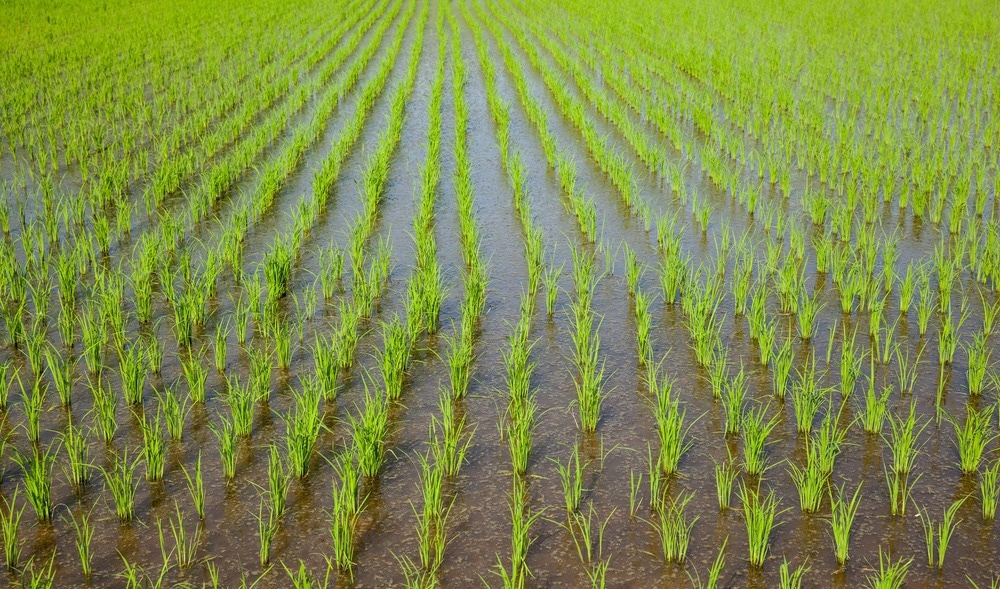According to new research from the University of Sheffield, rice could be grown in locations where it would otherwise fail if it were genetically modified to tolerate salt better.

Image Credit: pran/Shutterstock.com
Climate change is causing sea levels to rise. As a result, more and more areas of the world are experiencing seawater inundation, which causes salt water from the sea to flood farther inland and destroy crops that cannot handle the increased salinity.
One of the worst-hit crops is rice, which is consumed daily by 3.5 billion people and is the most important source of carbohydrates on earth. However, in countries like Vietnam, where seawater interference is rising, rice cultivation is becoming more and more difficult.
However, research from the University of Sheffield’s Institute for Sustainable Food has shown that modifying rice genetically to have fewer stomata—tiny openings used for water loss—makes it more resistant to salt.
Most plants have stomata, which are openings that control the release of water vapor and the uptake of carbon dioxide for photosynthesis. Scientists from Sheffield discovered many years ago that rice plants could use up to 60% less water by having fewer and smaller stomata, which is extremely advantageous in drought-prone areas.
Together with these new findings, published in the New Phytologist, those findings suggest that rice can be adapted to survive in harsher environments due to climate change, which will aid in the fight against global food insecurity.
However, the researchers also found that reducing the size and number of stomata could make rice more difficult to grow in extremely hot temperatures. As a result, various modifications will be required to ensure that rice can grow as efficiently as possible in various nations and environments.
For instance, rice could be better suited to growing in extremely warm temperatures if it has fewer, larger stomata.
Rice is a hugely important food crop eaten by over half the world’s population on a daily basis. Ensuring that it can survive in harsher conditions caused by climate change will be integral to feeding a growing population that is projected to reach 10 billion in 60 years’ time.
Dr. Robert Caine, Study Lead Author and Postdoctoral Research Assistant, School of Biosciences, University of Sheffield
Dr. Caine added, “Our findings reveal how rice can be modified to grow as effectively as possible in different climates—varieties of rice that have less stomata can survive with less water and in places with salt water. Meanwhile, natural rice varieties with fewer, bigger stomata are able to thrive in hotter temperatures.”
The High Agricultural Technology Research Institute (HATRI) in Vietnam and the University of Sheffield researchers investigated 72 rice varieties, both conventional and genetically modified. The finest dwarf rice varieties for crop yields are currently being studied to see if they can be made heat-resistant.
Journal Reference:
Caine, R. S., et al. (2022) The influences of stomatal size and density on rice abiotic stress resilience. New Phytologist. doi:10.1111/nph.18704.